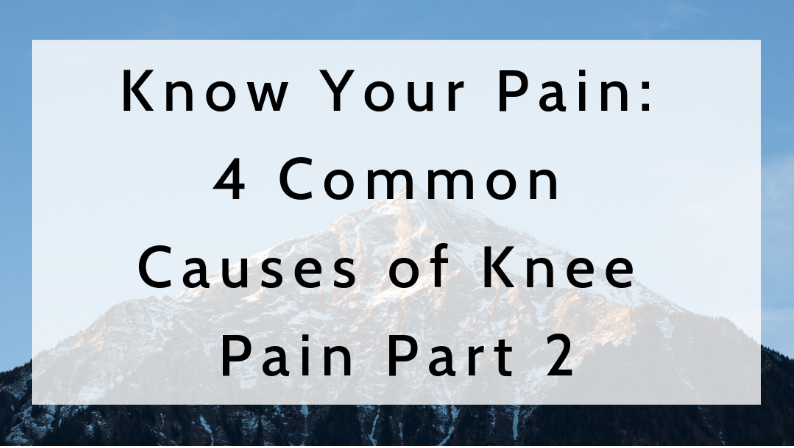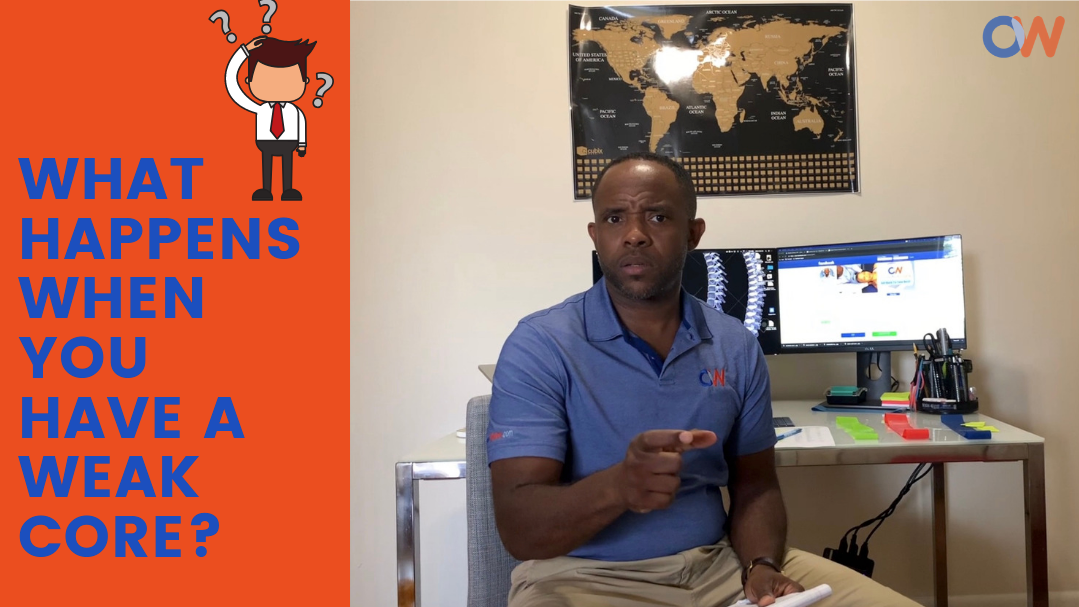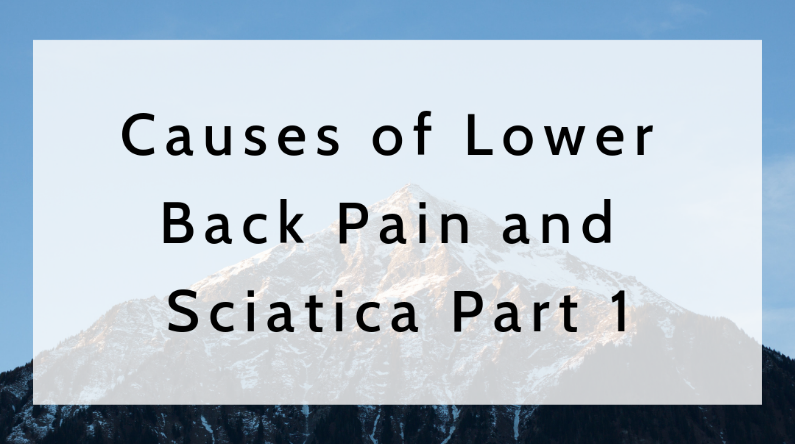BLOG
Blog
My
Work
Articles and videos to help you increase your knowledge and get back to your best self!

By Orlando Walters
•
15 May, 2024
Knee pain is one of the most frequent and limiting issues I’ve seen in my patients over my 10 year span as a health care practitioner. So let’s explore a few common causes of knee pain. The feeling can be described as sharp shooting, stiffness, swelling and warmth. Along with these symptoms there might be difficulty standing, walking or even going up and down steps or Stairs. Depending on level of activity they might not be able to walk, work, exercise, play sports or even perform simple tasks which were not problem before. The discomfort can be described as excruciating at times. The first step to treating your knee pain is to determine the cause. In order to grasp a full understanding of your pain, we must gather some background information. It’s critical to understand the root of knee pain and not just treat the symptoms.

By Orlando Walters
•
15 May, 2024
Knee pain is one of the most frequent and limiting issues I’ve seen in my patients over my 10 year span as a health care practitioner. So let’s explore a few common causes of knee pain. The feeling can be described as sharp shooting, stiffness, swelling and warmth. Along with these symptoms there might be difficulty standing, walking or even going up and down steps or Stairs. Depending on level of activity they might not be able to walk, work, exercise, play sports or even perform simple tasks which were not problem before. The discomfort can be described as excruciating at times. The first step to treating your knee pain is to determine the cause. In order to grasp a full understanding of your pain, we must gather some background information. It’s critical to understand the root of knee pain and not just treat the symptoms.

By Orlando Walters
•
15 May, 2024
Hello everyone! How you guys doing again? It’s me, Dr. Orlando Walters, doctor of physical therapy. Today we’re gonna show you five simple exercises to help strengthen a weak core at home. Now we’re using this beautiful scenic ground just to let you know that you can do these simple exercises just about any and everywhere. The only thing that you really need is just a little bit of knowledge and a little bit of effort. So stick around, stay tuned, we’re gonna show you the stuff that you’re gonna need and we’re gonna get into it to help you with your back pain. Exercise 1: 3 Step Core Contraction Ok so here’s what we’re gonna do right now. The first step is the 3 step core contraction. When we’re performing the 3 step core contraction, we want to think in our minds that we’re creating a foundation from which to build everything. So the first step is the belly button. What I want you guys to keep in mind is, you’re taking your belly button and pushing it all the way down to your spine. Keep in mind that you always want to keep breathing. DO NOT HOLD YOUR BREATH. Push that belly button down and breathe. The next step is while you’re holding that belly button down, glide that belly button up onto the rib cage keeping it as tight as possible. If you’re doing this correctly you’re probably going to feel a slight pull in the lower back region. If you feel that you know you’re doing it right. The third step is you’re gonna put a slight pelvic tilt in your lower back. The purpose of that is to get a full contraction of the core. What we do when we perform these three steps is we get contractions of all four of the abdominal muscles. Exercise 2: Hip Bridge What we’re gonna start off with is the foundation which was the 3 step core contraction. Always maintain the abdominal contraction. Next bend your knees and get into the core contraction. In order to maximize the core, we’re gonna introduce the lower extremities. Very gently try to raise your butt off the matt (or floor) and do 3 sets of 10 repetitions of these hip raises. Make sure you really feel those muscles in the back. And make sure you’re breathing! While you’re doing this, keep in mind to keep that core as tight as possible. We want to make sure you’re getting as full and complete a contraction as possible. Exercise 3: Hip Abduction What we’re gonna do now is focus on hip abduction. In order to perform this you’re gonna need something that creates a little bit of resistance. In this case we’re gonna use bands. Put the bands around your legs somewhere around the knees. Just in case you don’t have bands, you can use something as simple as your belt, a towel, or a sheer. Something to wrap around the legs to give you a little resistance. When you do that it activates all the muscled in the hips and the muscles in the abdomen and lower back. Start off with our foundation, the core contraction. Belly button down close to the spine and up over the rib cage. While you’re holding that nice and tight, and remembering to breathe, open the knees. You should feel activation of all the muscled in your core as well as your lower extremities. Just like before, we’re going to do 3 sets of 10 reps. Nice and easy. While you’re doing this, focus on the muscles in the core. That’s the most important part. Exercise 4: Hip Bridge and Squeeze For our 4th exercise to strengthen a weak core, what we’re gonna do is find an external device. I’m using this ball but it can be something as simple as a cushion, a pillow, or maybe a towel rolled up. All you want is a little resistance so that you can start engaging those core muscles. Start off with your strong core contraction from exercise one. Next take the ball, or other object, and put it between the knees. You’re going to squeeze the ball to activate those core muscles. You should feel this in the lower back, glutes, pelvis, and abdominals. Squeeze the object and hold it for a 5 second count. Squeeze, 5, 4, 3, 2, 1, release. Repeat for 3 sets of 10 repetitions. When you find this easy, we’ll add some spice to it. Raise the hips like our hip bridge and continue squeezing the ball for the 5 count. This looks simple, but it’s really activating you’re muscles. Do the same thing as before, 3 sets of 10 repetitions. Exercise 5: Baby Steps Our 5th and final simple exercise to help strengthen a weak core! Start off with your core contraction foundation. Belly button down and up, and slight pelvis tilt. Bend both knees while maintaining that core contraction as strong and firm as possible. Take one foot, raise it, and move it back just an inch or two. This exercise focuses on small movements that may have a high degree of difficulty for some individuals. The magic happens when you do this movement while keeping your core muscles contracted. Repeat the action with your other foot. Only move as much as you can with the core contracted. If you’re doing this right you’re going to start getting fatigued and sweating. Someone on the outside might not think you’re doing anything at all. Don’t worry about it. Repeat the movement for 3 sets of 10 reps, alternating your feet. As this starts to get easier, increase the distance that you’re moving your foot. From 1 inch to 2, 3, etc. That’s it! If you have any questions be sure to leave them below or reach out to me on Facebook and Instagram !

By Orlando Walters
•
15 May, 2024
A wise person once told me that an ounce of prevention is better than a pound of cure. So I decided, instead of waiting for patients to react to their pain I would show you how to prevent it in the first place. Back pain and injury can be avoided if you learn what to look for. Rule #1: Posture Frequently I have been asked how to reduce the chances or avoid injuries to the lower back and the core muscles. In order to accomplish this goal we have to keep 4 things in mind. The first is posture! The principle of maintaining good posture cannot be over stated because it will keep you out of harms way. It is important to keep in mind that you must maintain good posture with everything that you do. When your posture is good, all your body parts or anatomical structures will be in its correct position which will limit the wear and tear on the structures involved with the movement. Rule # 2: Flexibility The second rule to avoid low back injury is maintaining flexibility. Poor flexibility results in restriction of movement which leads to sprains and strains to muscles, tendons and ligaments. Poor flexibility starts off as slight stiffness but will lead to injury and damage if you’re not careful. Tightness to the powerful major muscle groups of the legs and the thighs have an influence on the lower back, creating tension and stress. Rule #3: Avoid Muscle Weakness The third principle to remember to avoid injury is muscle weakness. Muscle weakness will leave you open to injury because strong muscles protect joints. Whenever we have weak muscles performing activity it results in compensation or undue stress to other muscles or structures in the body and that is a recipe for disaster. Rule # 4: Coordination The fourth principle is coordination. Poor coordination is the results of the using muscles, joints and other structures improperly. When this happens you are likely to create injury. A simple and coordinated movement that we might take for granted is lifting up a baby. The truth is mothers of toddlers are doing a lot of strenuous activity lifting thousands of times a day. These 4 principles are easy to remember but difficult to maintain consistently on a daily basis with all activities. Posture has been something we have been told since a child in elementary school, however it is not as easy to maintain. Flexibility is taken for granted when we are younger but is more noticeable as we age. Muscle weakness and inadequate strength for basic movements is the number one underlying reason for visits to my practice as a physical therapist. Coordinated movements might be an emphasis during a performance or an Olympic event, however should be part of our thought patterns with all that we do. Your health is the most valuable asset that you have. Learn and practice increasing its worth. That’s it! If you have any questions be sure to leave them below or reach out to me on Facebook and Instagram !

By Orlando Walters
•
15 May, 2024
People ask me questions on a daily basis and a majority of them have to do with lower pain and other issues associated with it. In “What Happens When You Have a Weak Core,” I discuss the various issues that are associated with weakness to the lower back and the mid section core musculature in simple terms that all can understand. How It Starts In this section we discuss what are the potential outcomes of “What Happens When you have a Weak Core.” Unfortunately most people don’t understand the consequences of ignoring weak back muscles and how that affects the stomach region. Initially weakness in the lower back and core abdominal muscles do not present with symptoms. However, as time and weakness progress, evidence begins to present itself in the form of aches and pain, stiffness and ironically in some cases increased movement to the lower back spinal segments also known as instability. Some of these symptoms described are signs of a disc herniation. A disc herniation can also be described as bulge in the cushion that separate the bones of the spine. Spinal instability presents itself as increased mobility or an unstable spine. Stenosis can be described as arthritis to the spine. How It Progresses As severity increases, poor alignment of the spine becomes more common. The shifting of the vertebre or bones of the spine are the beginning of the worst possible scenario. Results of prolonged spinal mal-alignment include nerve damage, radiating or shooting pain into the extremity, muscle weakness and finally numbing or loss of sensation and control. With prolonged aggrevation to nerves, noticeable decrease in muscle size and strength can occur. Signs & Symptoms During the early onset of the weak core and lower back muscle symptoms, usually measures are not taken to fix them. The signs and symptoms go largely ignored or unrecognized until they become too much to bare and function is lost. After not doing anything about the discomfort for a period of time chronic pain becomes the new issue. As stated in the Scientific Journal Neural Plasticity,“ Chronic pain, as a stress state, is one of the critical factors for determining depression, and their coexistence tends to further aggravate the severity of both disorders.” Chronic pain can lead to depression. When symptoms are allowed to continue there is a noticeable decrease in quality of life. Your standards of health, comfort and happiness are negatively affected. This will include performing work duties or the inability to earn a living, taking care of your family or simply taking part in activities you enjoy doing. Useful Approach The best approach to recovery is to take the first step towards seeking help or professional expertise. A good healthcare provider will evaluate the entire situation, determine a proper course of action and finally educate their patient on how they are going to help them reach their goal. Also, individuals who are suffering from pain have to be educated on how they are going to help themselves recover because ultimately it is a team effort.

By Orlando Walters
•
15 May, 2024
I was approached by an attendee of a seminar that I spoke at and I was asked why would physical therapy be more beneficial for neck pain than other forms of treatment that the greater population might be familiar with such as massage and chiro to name a few? I thought briefly to myself “ that is a valid question”. Simply put, physical therapy involves various techniques designed to specific goals. Unfortunately, other health care professions tend to be based upon a specific philosophy which works great if the problem fits their narrow scope of treatment practice. However, issues arise when the only technique they have is not designed for the particular ailment that might be resented. As a result they end up trying to fit a square peg in a triangular hole (figuratively speaking) leading to greater discomfort and potentially malpractice from a practitioner performing out side there scope of knowledge. Neck pain for example can be the result of a multitude of issues present due to the complexity of the joint orientation, muscles, ligaments as well as the nerve distribution. Physical therapists are movement experts who’s deeper understanding of the structures as well there movement patterns in relation to other body parts as well as external forces make them perfect for addressing that issue. A part of a physical therapy evaluation and treatment is not only to help get rid of pain, although very important. A client will be best serve by a physical therapist running a diagnostic to obtain a deeper understanding of the root cause of the pain or dysfunction. Treatment might require soft tissue mobilization, joint manipulation, movement analysis for biomechanical enhancement via kinesiological study or as simple as palliative care to reduce severe pain and discomfort in an acute situation. It is most likely the primary reason chiropractors in recent years have been seeking to hire physical therapists implementing their professional skill level to enhance their practice because it is well understood in the medical field their advanced capabilities. So to be clear, other professions definitely have a usefulness and efficacy when treating issues with a patients neck. However, considering how dynamic and complex the neck is, evidence based research dictates that a comprehensive treatment approach would be most affective and would suit the skill set of a seasoned physical therapist.



